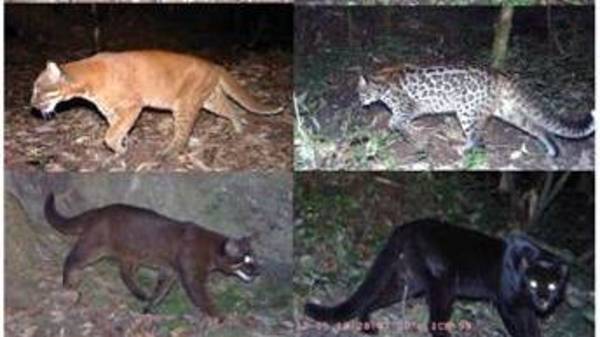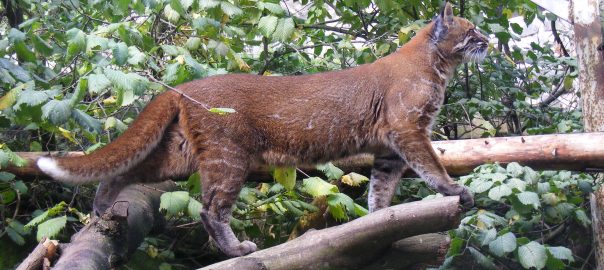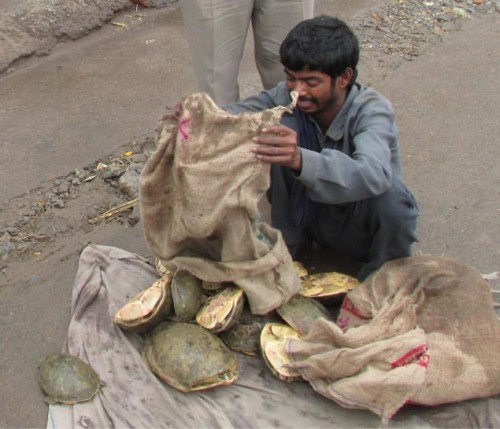
It can be grey, black or cinnamon coloured. It can have leopard-like rosettes or ocelot-like markings on its coat. Or the Asiatic Golden Cat can be golden coloured true to its name. For the first time ever, scientists have discovered that this threatened species of wild cat found in India can have six different colour morphs though all individuals belong to the same species. This is the first time in the world that these many colour variations of the same species of wild cat have been reported from a single area.
Also Read: Snow Leopard Photographed for the First Time in Arunachal Pradesh
The most commonly known colour morphing in animals is that of the leopard with the melanistic ones also called the black panther. These leopards have a darker skin because of the excess of the skin pigment melanin. However, they are not a different species. Jaguars found in South America also tend to have melanistic or black colour coated cousins.
In Arunachal Pradesh, Indian scientists from Zoological Society of London and UCL made the discovery of the six completely different colour coats of the Asiatic golden cats during a wide-scale camera trapping study covering both community forests and protected areas across Dibang Valley to better understand human-wildlife interaction. What the research actually led to was this totally unexpected finding!

What does it mean?
The Asiatic golden cat is an wild cat found in Arunachal Pradesh, Assam and Sikkim in India and other nations of Southeast Asia. The shy creature lives in forests, savannahs, grasslands and in mountains as well as plains.
This wide variation in the type of habitat it lives in, could be the reason why the cat displays such variation in its coat colour too, believe the scientist who were part of the study. It enables them to occupy different habitats at different elevations — from wet tropical lowland forests to alpine scrubs — and provides camouflage while hunting different prey such as tropical pheasants or Himalayan Pika (a small mountain-dwelling rabbit-like mammal).
Also Read: India Gets a New Species of Venomous Pit Viper Snake
What is of more interest to science is how this remarkable feature takes place in the cat and how quickly this adaptation occurs to help it adapt to the changing environment. In a world where climate change is quickly transforming habitats for so many species, this trait of the cat can be the pivotal characteristic that allows it to survive. The IUCN (International Union for Conservation of Nature) remarks that residential and commercial developments, water management, logging, and poaching are already threats that the animal is facing in its habitat.
Are these 6 different species of the cat?
The colour coat difference, according to the research team arises due to random genetic mutation and may be passed on from one generation to the other after that. The cats are of different colours but are of the same species and can therefore interbreed. In future, however, one population may die out if that colour variation is not transferred along the line.
Dr. Sahil Nijhawan, the lead author and British Academy Fellow at ZSL’s Institute of Zoology and UCL said: “According to evolutionary theory if a colour morph is not beneficial for a species survival — over time, it should die out in the population. The fact that we have so many different colour morphs persisting in Dibang Valley shows there must be some ecological advantages to a variety of colours.
“We now know Dibang Valley hosts the world’s most diverse range of colour morphs of a wild cat species ever reported in one site, but we are only just starting to understand this rare ecological phenomenon. We need more studies that shed light on such unique adaptations and the benefits they provide to species, especially in a world where they must adapt quickly.”
If you liked what you read and wish that we continue to bring stories of lesser known species into the mainstream, do support our work by clicking here.





